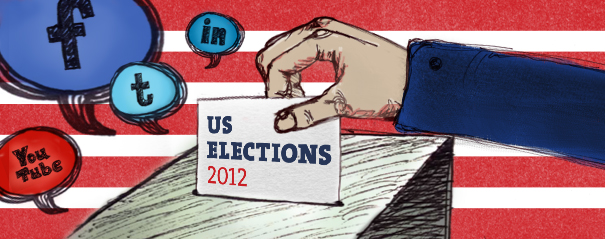Social Media has become one of the greatest mediums when it comes to sending and receiving messages. Currently, about 65% of Americans use social media to connect with others. For many it has become a way to stay informed, share news and express opinions. With that being said, it’s an effective venue for politicians to rally support. Last election we saw Barack Obama’s team engage the public by reaching out through Facebook and Twitter. Since then the number of Facebook users has grown from 44.3 million in 2008 to 143.3 million in 2012; Twitter users have shot up from 3.4 million to 24.1 million; and online video viewers have jumped from 121.4 million to 178.8 million. 88 percent of Internet users receive most of their election news online and 62 percent expect candidates to have a social media presence, according to SocialTimes.com This year we can add Google+ to the social media entourage and with a more advanced perspective on the reach of social media, we can assume that its’ presence during this presidential election will be notable.
Here are 5 ways you can expect to see social media being used during the campaign for presidency this year.
- Foursquare will be used more this year. Currently Mitt Romney currently has over 3,800 followers and has used the location based application by checking into various places around the country. He has a high level of engagement by checking into over 5 places in the past few days and offering followers ‘tips’ about the places he has visited. “Try the corndogs” Romney suggested after checking in at the Iowa State Fair.
- YouTube will be a huge factor in gaining viewership and extending messages to potential voters. YouTube was vital in the turnout of the 2008 election when President Obama’s “A More Perfect Union” (perhaps better known as the “Yes We Can” speech) was viewed a groundbreaking 1.2 million times within the first 24 hours of posting it. On March 27, 2008, the Pew Research Center called the speech “arguably the biggest political event of the campaign so far,” noting that 85 percent of Americans said they had heard at least a little about the speech and that 54 percent said they heard a lot about it. With that sort of power we are sure to see more campaigns using the video sharing site with hopes for similar success.
- Twitter has become much more important as far as following candidates and important issues goes. This year was the first ever presidential debate hosted entirely on the popular social networking site. 140TownHall.com has the entire debate shown on their site. Perhaps the appeal of this tactic is keeping arguments down to 140 characters, helping the candidates to be concise and direct when answering. It’s for this reason that we foresee this being the first of many Twitter gatherings during the election process.
- Google+ is new but shouldn’t be overlooked. On January 30, 2012 Barack Obama hosted the first ever presidential “hangout”. The virtual interview was conducted with 5 citizens from across the country and the questions asked were contributed by more than 227,000 people. Over 133,000 questions were submitted and more than 1.6 million votes were cast as to which of these questions they would like to hear President Obama address.
- Of course we know that the social media titan, Facebook, will be a huge part of the election process. Every candidate has a Facebook page and actively posts content. Followers can subscribe to their pages to see behind the scenes content like video of Ron Paul before a debate. Facebook has also encouraged participation with their Election Day event inviting Facebook users to get out and vote.


